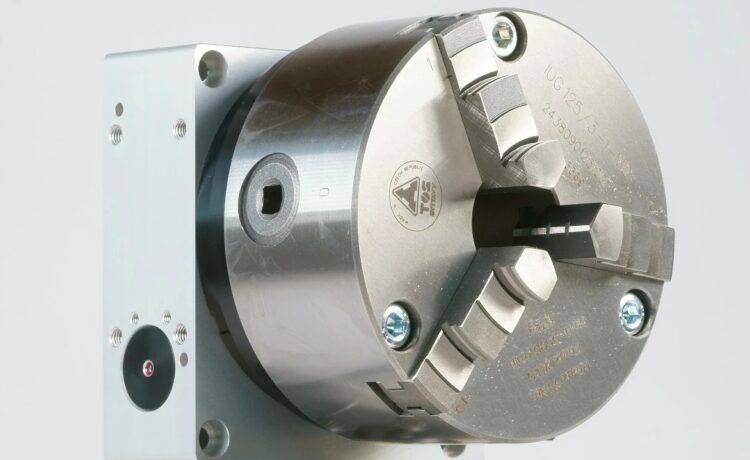Production accuracy starts with structural rigidity and advanced follower designs. Today’s motorized rotary tables are engineered to manage immense loads, some spanning up to 16 meters in diameter with mass moment inertia exceeding 300,000 kgm².
Thanks to friction-based multi-follower systems, wear is minimized while maintaining tight positional control, often achieving accuracy within ±6 arc seconds. Thorough testing guarantees each component is perfectly aligned and consistent. Drift and slippage are minimized with these precise builds.
If your goal is zero-compromise consistency, rotary table systems offer the control and confidence needed to support modern manufacturing goals. Think heavy machinery, think tiny electronics—these tables are the foundation of smooth, efficient movement in both.
Optimizing Precision with Rotary Table Systems
You improve production accuracy with stiff construction and friction-based follower setups. Large-scale designs have handled loads spanning 16 meters in diameter, with mass moment inertia over 300,000 kgm². This advanced method secures plus or minus 6 arc seconds of positional consistency.
It also reduces wear through multiple followers engaged at once. You benefit from thorough testing of each machined component for alignment. That process maintains high tolerances for stable rotation and predictable stops.
You see reliable performance under conditions, access next-level solutions through precision positioning turntable systems to maintain top quality with your motorized rotary table.
Boosting Efficiency in Industrial Automation Processes
- Improved Throughput & Efficiency: Motorized rotary tables help increase overall productivity by streamlining processes.
- Reduced Production Errors: Automated systems can cut production errors by up to 40%, especially in automotive and packaging applications.
- Faster Changeovers: Optimized designs allow for quick transitions, resulting in faster turnaround times and tighter delivery schedules.
- Minimized Bottlenecks: Rotary tables help reduce slowdowns on the production floor by enabling smoother workflow.
- Lower Labor Costs: Automation allows operators to shift from repetitive tasks to system monitoring, leading to labor cost savings.
- Support for Industry 4.0: Rotary systems align with smart manufacturing trends by integrating sensor feedback and robotics for adaptive motion control.
- Scalable, Long-Term Benefits: Ideal for manufacturers seeking speed, flexibility, and precision in scalable automation solutions.
Key Benefits of Motorized Turntable Technology
Rotary tables use worm gear systems (often with gear ratios like 90:1 or 180:1) for precise control. Robots and detailed processes needing repeated moves from many angles are easily managed with high-resolution imaging.
GLOBALTEK®’s motorized rotary table designs provide slower, controlled speeds suited for applications that demand close attention to detail. The systems provide a steady workflow with very accurate, continuous rotation. Think welding, inspection, or assembly, these are ideal applications.
This indexing system improves things like slot milling and part inspection. Sensor positioning is also easier, leading to a much better workflow. No more fiddling around by hand all the time! Users see improvements: fewer errors pop up, quality control is tighter, and less material goes to waste.
According to industry feedback, facilities report at least a 25% increase in process efficiency when switching to advanced rotary systems. Product quality increases, operator fatigue decreases, and your ROI will significantly improve. This translates to a more efficient and profitable operation.
Precision positioning turntables boost efficiency, no matter the job. They’re great for everything from fine machining to massive assembly lines. Need solutions that can handle the wear and tear of daily use while maintaining incredibly precise results? Look no further. Our solutions provide both.







